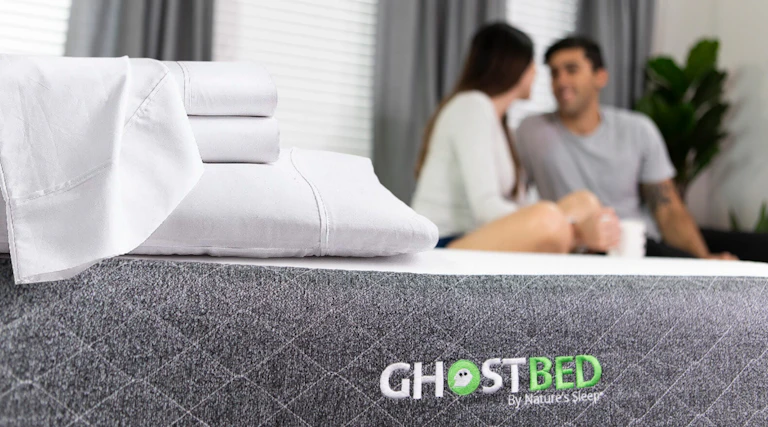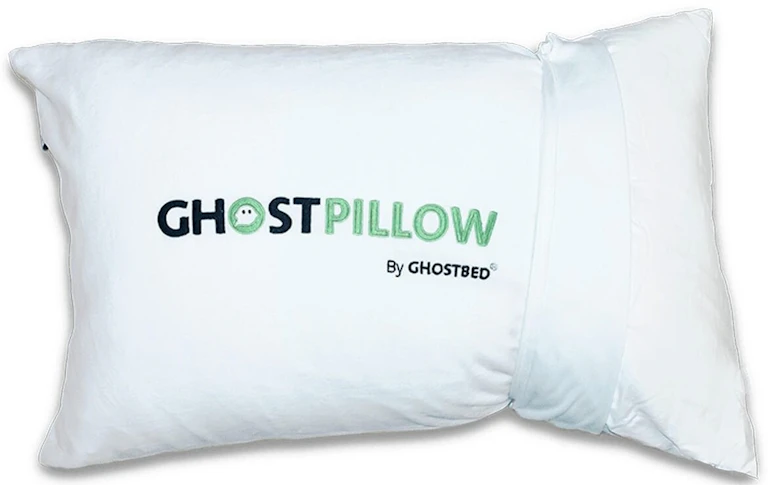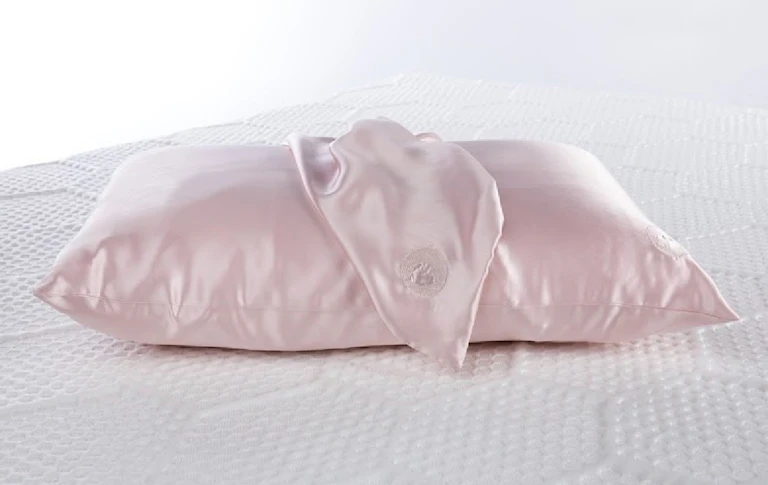There’s nothing quite like crawling into a bed with fresh, clean sheets. But it doesn’t just feel nice—it’s important for your health! Experts recommend washing your sheets at least once every two weeks. If you’re a hot sleeper that sweats a lot, once a week may be more appropriate.
Unless they’re unusually dirty, you can place most sheets right into your washing machine on a normal (or regular) cycle in cool or warm water. This setting can help you avoid excessive wrinkling.
But it’s not always that simple. If you still have questions, don’t worry, you’re not alone! Keep reading and we’ll help you understand everything you need to know about washing and drying your luxury sheets without ruining them. With proper care, your sheets will last longer, feel better on your bed and even help you fall to sleep faster.
Overview: How to Wash Bed Sheets
While some specific materials require extra attention and special care, most sheets can be washed as follows:
- Water Temperature: Cold or warm (if moderately soiled)
- Detergent: Regular
- Cycle: Regular
- Drying: Line-dry or tumble-dry on low
- Ironing: Medium setting

Is it Better to Wash Sheets in Hot or Cold Water?
The temperature you choose for your sheets will vary, depending on how dirty or soiled your sheets are. Cool and warm water are both good options, but take a look at the guidelines below.
When To Use Cold Water to Wash Your Sheets
In most cases, cold or cool water is a perfect setting for washing your sheets. It’s also the best option for delicate fabrics, like silk. But even if your fabric isn’t delicate, washing with cold water can help preserve the color of your bedding.
However, cold water can make it more challenging to remove stains, so be sure to pretreat any heavily-soiled areas before washing.
When To Use Warm Water to Wash Your Sheets
Warmer water is a good option if your sheets haven’t been washed in a while, or if they’re moderately soiled. We also recommend this setting during cold and flu season, as it can help kill viruses, bacteria and other pathogens. Avoid hot water, however, as that will cause the sheets to wear out quicker.
Keep your fabric type in mind, too. Silk for example, is not a fan of heat—but cotton loves it! So be sure to check your manufacturer’s tags before tossing your sheets into the wash.
5 Simple Steps to Wash Your Bed Sheets
For health and safety reasons, we recommend washing your sheets once a week or once every two weeks. If you struggle to stay cool at night and wake up sweaty, you may need to wash your sheets more often.
Here are the steps to get you started:
1. Take the Sheets off the Bed
Strip the sheets to get ready for washing. Before tossing your sheets in the machine, read the care label to ensure that you select the proper heat settings for washing and drying.
2. Put the Bed Sheets in the Washer
Place the sheets into the washer on their own. If you do have a bit more room to fit additional items, you can add a couple of cotton t-shirts in the same color family as the sheets.
Do not mix towels in the wash with sheets as the roughness of the towels will work much like sandpaper and cause the sheets to wear faster. Towels can also produce lint balls that will end up covering the sheets when tossed in together.
Be sure not to bundle too much into the washer. An overloaded machine will result in sheets not getting thoroughly clean and may even cause the machine motor to break.
Marc's Tip
Make life a little easier with extra bed sheets on hand. That way, you won’t have to wait until your laundry is done with an unmade bed. Check out our cooling bed sheets — they’re silky-soft and breathable, so you stay comfy and cool all night long.
3. Add Detergent
After the sheets are sitting in the machine and are ready to be washed, it’s time to add the detergent. As instructed for load size, measure out the detergent and place it in the washer. Take note of your machine requirements and where to place the soap. Some machines have dedicated compartments for both detergent and fabric softener.
Too much of a good thing is a bad thing, so don’t use too much detergent as this could cause your sheets to wear faster. Typically, a quarter-cup of liquid is sufficient for a regular-sized load. If sheets are unusually soiled, you may want to add a bit more soap.
4. Select a Cycle
New machines can have so many incredible features it can be hard to know what setting to wash your bed sheets on. Some contemporary machines have a cycle made specifically for sheets. If yours doesn’t have a special sheet setting, select a regular cycle and you should be safe!
5. Tackle Stains Head-On
If desired, you can add a supplement to aid in washing your bed sheets. These natural ingredients can improve the cleaning process:
- A quarter cup of lemon juice in the wash cycle will work to brighten. Lemon juice is an excellent natural alternative to harsh bleach or a brightening chemical additive.
- One cup of white vinegar added to the rinse cycle will ensure that any trace amounts of detergent are completely removed. This can be incredibly helpful if you have someone in your family with sensitive skin or allergies.
Should You Wash New Sheets?

Many people wonder whether it’s important to wash new sheets before you use them, and this is a great question. The answer is yes; you should wash new sheets before using them.
Sheets right out of the package may feel a bit rough from chemicals added during the manufacturing process. And here’s the kicker—regular detergent can lock in the harsh chemicals, thus preventing bed sheets from ever feeling super soft.
Instead, pre-wash sheets with baking soda and vinegar before use. Use one cup of baking soda to begin the wash, and then add one cup of white vinegar to the rinse cycle. After this wash, the bed sheets will be ready to use and enjoy for years to come.
How to Wash Special Fabric Sheets
Some bed sheet fabrics may have particular washing requirements. Silk, satin, linen and TENCEL all require different washing methods.
Silk & Satin
You will want to use a detergent specifically made for delicate fabrics when washing silk and satin bed sheets. For these specific materials, be sure to wash them in a gentle cycle with cold water. Don’t mix heavier fabrics with silk sheets as this can lead to snags.
Don’t use any type of bleach or chemical additive when you wash silk sheets, as this can cause damage to the delicate fabric. After washing, don’t put silk sheets in the hot dryer. Instead, dry your sheets on a clothesline. If you don’t have a clothesline, dry your silk sheets on a no-heat cycle.
Linen
Although linen is similar to cotton (which is an easy material to wash), linen fibers are weaker and need to be cleaned with extra attention. Use a mild detergent and wash linen bed sheets with warm (not hot) water on a gentle cycle. Hang-dry instead of tumble-drying, if possible, as it’s prone to shrinking when subjected to hot temperatures.
TENCEL™
TENCEL fibers are all-natural fibers that are created with environmentally responsible processes using sustainability-sourced wood. TENCEL is exceptionally breathable and its all-natural properties make it bacteria and allergen-resistant.
Like cotton, TENCEL is a relatively durable material, but we suggest washing your high-quality sheets that use TENCEL fibers on a delicate or cold cycle. You should also consider using a mild detergent. If possible, air-dry your TENCEL sheets or choose the low-heat, low-tumble setting on your dryer.
How to Dry Your Sheets
In addition to knowing how to wash bed sheets, you should also know some tips for drying your sheets.
Make sure to quickly remove wet sheets from the washer so that they don’t get moldy. Gently take the sheets from the washing machine and shake them out to prepare them for drying. You don’t want to toss a bundled-up knot of sheets in a dryer, as this will impede drying time and cause unnecessary wrinkling.
Method 1: Clothesline
On a bright sunny day, you may want to hang your bed sheets outside on a clothesline. But, only hang white sheets in the direct sun. For colored sheets, you will want to find a shadier spot so the sun doesn’t fade the fabric. To prevent your sheets from blowing off the line in the wind, pin the sheets to the line in the corners and not in the middle.
Method 2: Dryer
Machine drying gives the sheets a desirable soft-to-the-touch feel. Even after line drying, you may want to pop the bed sheets in the dryer for a moment to soften them up before making the bed.
Shake the sheets out before placing them in the dryer on a medium or low setting. Using the hot setting can wear the sheets out prematurely. Some machines have automatic settings that will turn off when the dryer senses that the sheets are dry.
4 Common Mistakes to Avoid When Washing & Drying Bed Sheets

As you’re washing your sheets, make sure to avoid these common mistakes:
Overloading the Washer
Not all washing machines are alike—just like people. With that in mind, take care to not overload your machine. A set of King size sheets, for example, will take up a machine all on their own. Even though it will take a few loads, avoid the temptation to overload your washer with more than it can handle. The reward for your patience will be in the form of crisp, clean and inviting bed sheets that are soft and cozy.
Using the Wrong Washer Setting
It’s easy to confuse having a full load with a heavy-duty load. Generally, the heavy-duty setting is reserved for heavily soiled fabrics, such as work clothes. Sheets, unless they’re unusually dirty, should be placed in the wash on a normal, or regular, cycle.
Over-Drying
With bed sheets taking up a lot of space, it stands to reason that they may also take a bit longer to dry. But, surprisingly, this isn’t the case. Try not to leave the bedding in on an extra-long dryer setting, as this can cause shrinking and extra wear.
Drying Bed Sheets With Towels
Tossing the bed sheets in with the towels is a big mistake. Although they may be linen cabinet mates, they don’t do well together in the dryer. Towels are thicker and heavier than sheets and require longer dry times. Sheets tossed in with towels will be cycling in the machine already dry, waiting for the towels to catch up.
In addition, the rough texture of the towels can rub against the soft, thinner sheet material and cause pilling.
Choosing the right set of sheets for a good night’s sleep is an accomplishment in itself, so make sure you take care of your sheets properly by learning how to wash and dry them. By choosing the proper wash cycle and temperature, knowing when unique fabrics require extra care and avoiding some common mistakes, you’ll be able to enjoy your luxury sheets for years to come.
Complete Your Bedroom With GhostBed
Sheets are just one part of the sleep equation. Complete your bedroom by pairing our bed sheets with a cooling pillow, a luxurious silk pillowcase, an All-In-One Foundation™️ or a cool-and-cozy weighted blanket. Ready for a complete bedroom overhaul? In that case, grab one of our bundles to get it all and save!




